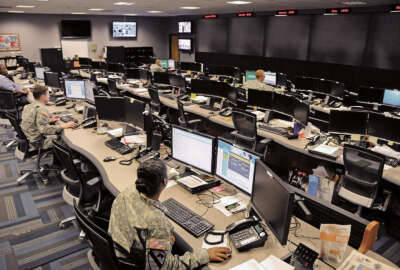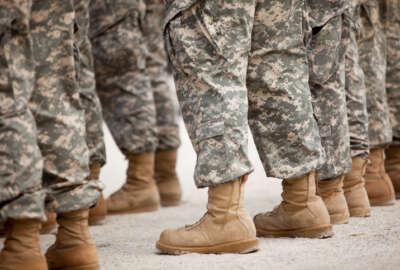
A strong Army in pursuit of data dominance
The well-trained and well-equipped warfighters of the U.S. Army have an arrow in their quiver that you might or might not know about: data dominance.
The well-trained and well-equipped warfighters of the Army have an arrow in their quiver that you might or might not know about: Data dominance.
“An army is structured to make life and death decisions. So if we can have data available, we understand that data and we use that data in a way we become data dominant. And that means we have leverage over our adversary and our senior leaders can make risk-informed decisions,” said Lori Mongold, Chief of Strategic Operations Enterprise in the Army Management Office on Federal Monthly Insights — Analytics in Government.
Mongold said there is the technical side to “wrangling data” and getting it into the hands of people who understand it and know what to do with it.
“The Army is responsible for making sure we have the right people with the right things at the right time for the right mission. And in order to do that, we’ve got to combine a bunch of data elements, given different variables,” Mongold said on Federal Drive with Tom Temin.
Mongold said the Army uses a “hybrid approach” to gathering and storing data, where it is visible, accessible and relevant.
“Time is a critical factor here. Data means different things depending on time,” Mongold said. “A unit in peacetime — what we call an Army at rest — has significantly different data elements as it prepares for its wartime mission, than a set of data elements for when it’s in motion or when we’re actually deploying it.”
Addressing the question of data governance, Mongold said it is really a “cultural issue.” She notes that the tendency of people is to cling to data, not selfishly, but motivated by simply trying to “stay in their lanes.” But data’s strength, she said, is found in sharing it.
“The power in the data connected is something that Army senior leaders need. So what the Army has done is establish a Chief Data Officer,” Mongold said.
The governance structure is deep. Among many layers you’ll find an Army analytics board, an Army data board and mission-area data officers.
“The mission-area data officer concentrates on major mission areas like the Business Mission area, the Warfighter Mission area, the Defense Intelligence Mission area, and then the Enterprise Mission area,” Mongold said.
In the next five years, Mongold expects an increased focus on an enterprise cloud and data strategy.
“I see the gap closing between our ability to have a seamless data exchange and a seamless approach to the Army’s ability to make more sound, risk-informed decisions, and defeat our adversary in a domain where we probably have lacked our ability to do that,” Mongold said.
Copyright © 2025 Federal News Network. All rights reserved. This website is not intended for users located within the European Economic Area.
Peter Musurlian is a producer at Federal News Network.
Follow @PMusurlianWFED
Related Stories






